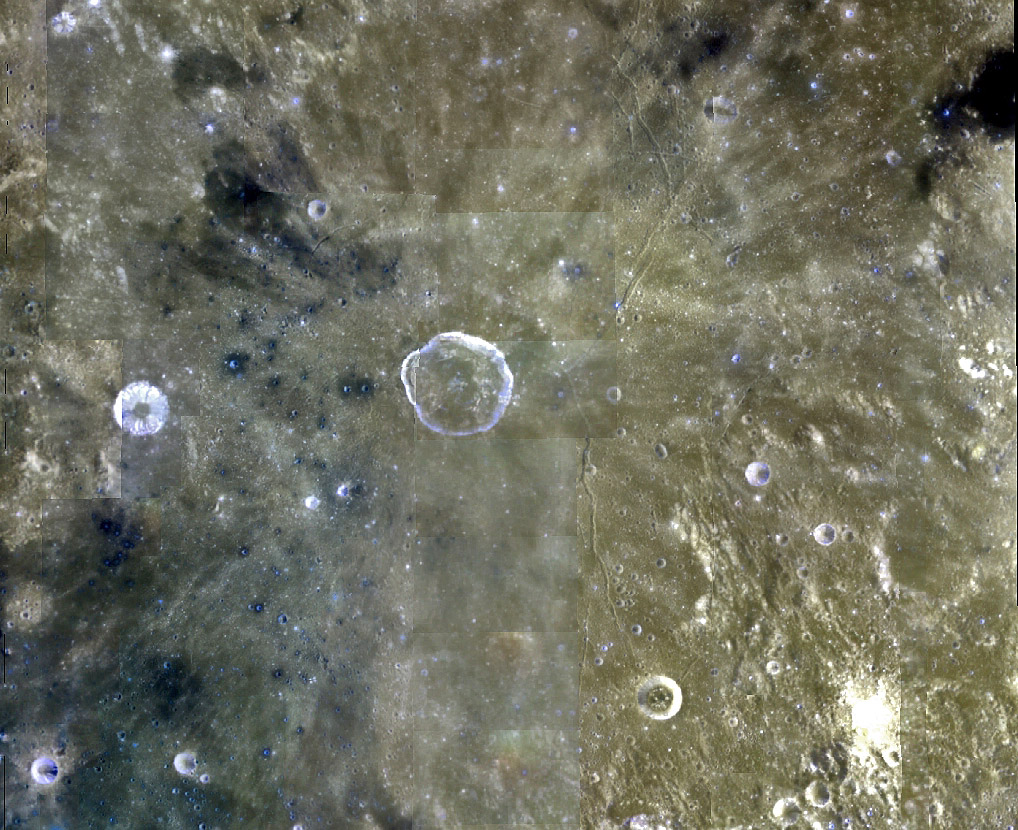
color albedo image from Clementine viaMap-A-Planet
Yesterday’s LPOD showed Triesnecker and adjacent rilles under dramatic low Sun illumination. I wondered then about the nature of the relatively smooth plains that the crater and rilles cut into. Yesterday’s image depicted the plains as being dark, but high Sun conditions as recorded in this Clementine scene reveal that they are actually light-hued. When the Moon was mapped by the US Geological Survey in the 1960s such light plains were interpreted as volcanic rocks different from the dark mare lavas; now no one accepts that idea. The high resolution Clementine view shows a few dozen small dark-halo craters (DHC) to the west and southwest of Triesnecker. There are two types of DHC - true volcanoes that erupted ash, and normal impacts that excavated underlying mare basalt. The DHC near Triesnecker are impacts; their existence shows that Sinus Medii lavas extend under the area west of Triesnecker. But there are no Triesnecker rilles west of the crater, and east of the crater - where the rilles are - has no DHC. Hmm. I would think that all of the light material is just a thin layer of ejecta from Triesnecker, but why don’t the small impact craters on the east bring up dark lavas? Was Triesnecker an oblique impact that deposited a thicker layer of ejecta on the east side? But there is really no evidence for that. Is there no buried lava on the east? So although there is a better understanding of what this scene shows we are still left with the mystery of the nature of the light plains that the rilles formed in. As an aside - note the crater Hyginus A near the upper right. I had never before noticed that it is very elliptical. It reminds me of Messier and was probably formed by oblique impact.
Related Links:
Rükl plate 33
Yesterday's LPOD: Continuing East
Tomorrow's LPOD: Not Quite a Rille
COMMENTS?
Register, Log in, and join in the comments.



